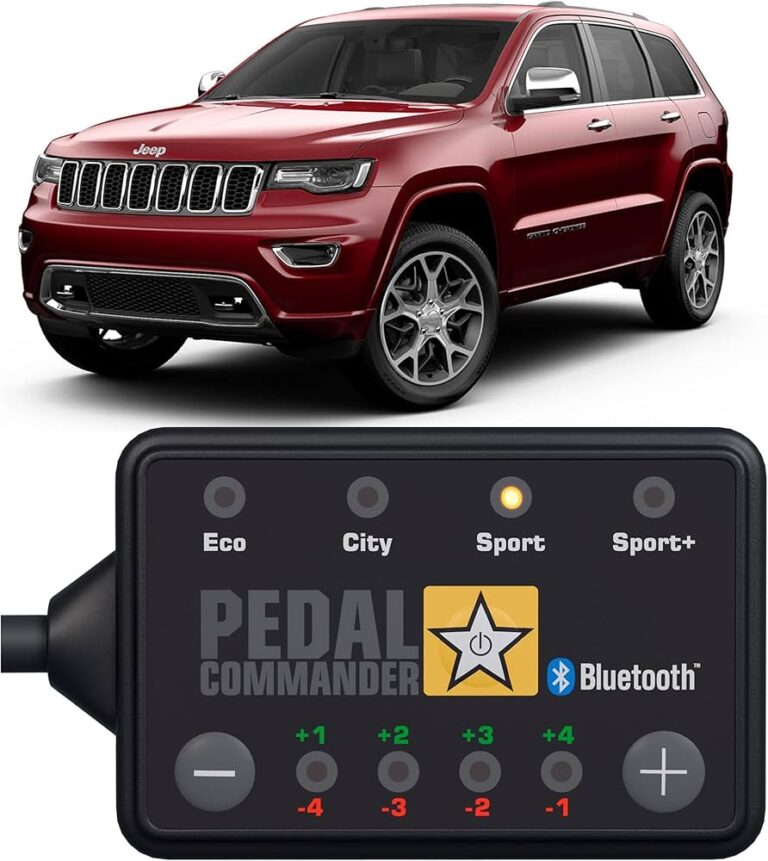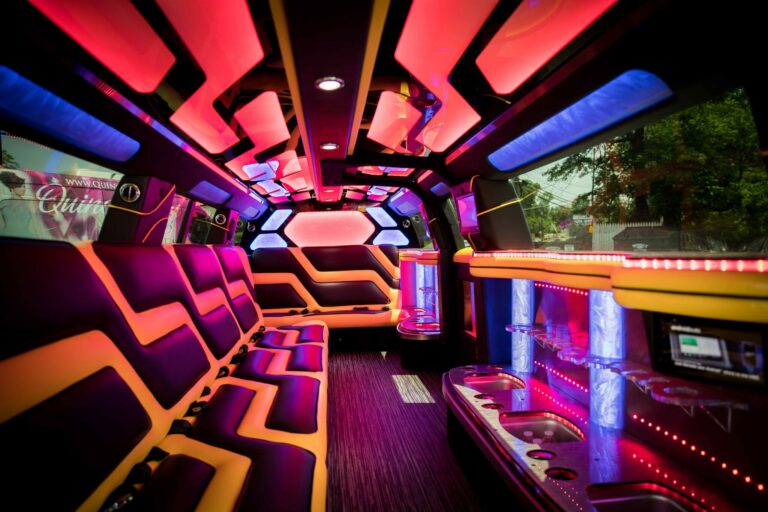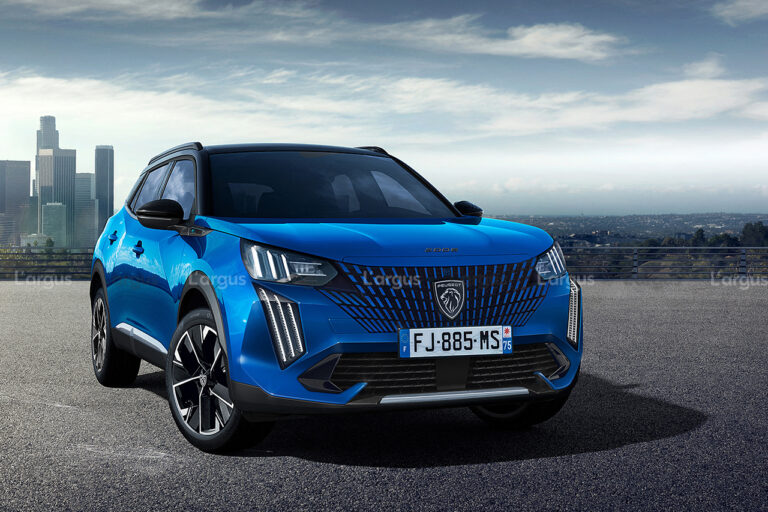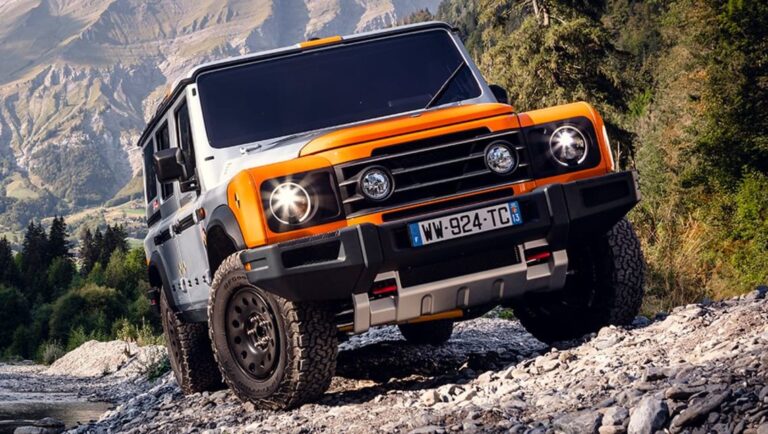2017 Jeep Cherokee Rims For Sale: A Comprehensive Buyer’s Guide
2017 Jeep Cherokee Rims For Sale: A Comprehensive Buyer’s Guide jeeps.truckstrend.com
The 2017 Jeep Cherokee is a popular SUV known for its blend of off-road capability, on-road comfort, and distinctive styling. While its factory-installed rims are functional, many owners seek to upgrade, replace, or customize their vehicle’s appearance and performance by exploring the vast market for 2017 Jeep Cherokee rims for sale. Whether you’re looking to refresh a damaged set, enhance your vehicle’s aesthetic appeal, improve handling, or prepare for seasonal tire changes, understanding the nuances of purchasing the right rims is crucial. This comprehensive guide will navigate you through everything you need to know about finding, selecting, and buying the perfect rims for your 2017 Jeep Cherokee.
Understanding Your 2017 Jeep Cherokee’s Rim Specifications
2017 Jeep Cherokee Rims For Sale: A Comprehensive Buyer’s Guide
Before diving into the world of available rims, it’s paramount to understand the original equipment manufacturer (OEM) specifications for your 2017 Jeep Cherokee. These specifications ensure proper fitment, safety, and compatibility with your vehicle’s suspension and braking systems. The 2017 Jeep Cherokee, across all its trim levels (Sport, Latitude, Limited, Trailhawk, Overland), typically shares the same fundamental rim specifications:
- Bolt Pattern (PCD – Pitch Circle Diameter): 5x110mm. This means there are 5 lug holes, and they are arranged in a circle with a diameter of 110 millimeters. This is arguably the most critical specification for compatibility.
- Diameter: OEM rims typically range from 17 inches to 18 inches, with some higher trims offering 19-inch options. Aftermarket options can go up to 20 inches or even larger, though this requires careful consideration of tire size and potential rubbing.
- Width: OEM rim widths usually fall between 7 inches and 7.5 inches.
- Offset: The offset (ET) is the distance from the hub mounting surface to the centerline of the rim. For the 2017 Cherokee, OEM offsets typically range from +35mm to +45mm. A positive offset means the hub mounting surface is closer to the front of the wheel. Understanding offset is crucial for preventing the tires from rubbing against suspension components or protruding too far from the fender.
- Center Bore: The center bore is the hole in the center of the wheel that fits over the vehicle’s hub. For the 2017 Jeep Cherokee, the OEM center bore is 65.1mm. When purchasing aftermarket rims, it’s ideal to match this or use hub-centric rings to ensure a snug fit and prevent vibrations.

Knowing these numbers will serve as your non-negotiable checklist when evaluating any rim for sale.
Why Purchase New or Used Rims for Your 2017 Jeep Cherokee?
There are numerous compelling reasons why a 2017 Jeep Cherokee owner might be in the market for new or used rims:
- Aesthetic Upgrade and Customization: This is perhaps the most common reason. Factory rims, while functional, can be generic. Aftermarket rims offer a vast array of designs, finishes (gloss black, chrome, machined, bronze, custom colors), and styles that can dramatically transform your Cherokee’s appearance, making it unique and reflecting your personal taste.
- Performance Enhancement: Lighter rims, often made from advanced alloys, can reduce unsprung weight. This reduction can lead to improved acceleration, better braking response, and more precise handling. Some designs also offer better heat dissipation for brakes.
- Damage Replacement: Potholes, curb rash, minor accidents, or corrosion can severely damage a rim, affecting both its appearance and structural integrity. Replacing a damaged rim is essential for safety and performance.
- Seasonal Tire Swaps: Many owners opt for dedicated sets of rims for winter and summer tires. This makes seasonal tire changes quicker, easier, and can extend the life of your primary rims and tires. Steel rims are often chosen for winter due to their durability and lower cost.
- Tire Compatibility: If you plan to install larger, wider, or specialized tires (e.g., aggressive off-road tires), your OEM rims might not be wide enough or have the correct offset, necessitating new rims to accommodate the desired tire size.


Types of Rims Available for the 2017 Jeep Cherokee
The market for 2017 Jeep Cherokee rims offers a variety of types, each with its own advantages and disadvantages:
- OEM (Original Equipment Manufacturer) Rims: These are identical to the rims that came with your Cherokee from the factory.
- Pros: Guaranteed perfect fit, maintain original vehicle aesthetics, often readily available from dealerships or salvage yards.
- Cons: Can be expensive when new, limited in style options, may not offer performance improvements.
- Aftermarket Rims: These are rims produced by companies other than Jeep. They come in various materials, designs, and price points.
- Materials:
- Alloy Rims: The most common type. Made from aluminum alloys, they are lighter than steel, offer intricate designs, and come in various finishes. They are generally good for performance and aesthetics.
- Steel Rims: Heavier and more basic in design, but extremely durable and affordable. Often preferred for winter setups or heavy-duty off-roading where aesthetics are secondary to resilience.
- Chrome Rims: Typically alloy rims with a chrome plating for a highly polished, reflective finish. They look luxurious but can be prone to peeling or pitting if not maintained properly.
- Styles: Aftermarket rims offer endless possibilities, from multi-spoke designs to solid disc styles, aggressive off-road looks, and sleek, modern aesthetics. Popular aftermarket brands include Fuel Off-Road, Black Rhino, Method Race Wheels, XD Series, American Racing, and many more, alongside numerous generic options.
- Materials:
- Used Rims: These can be either OEM or aftermarket rims that have been previously owned.
- Pros: Significantly more affordable than new rims, environmentally friendly.
- Cons: Condition can vary greatly, potential for hidden damage (bends, cracks, severe curb rash, corrosion), no warranty, may require more thorough inspection.
Where to Find 2017 Jeep Cherokee Rims For Sale
The avenues for purchasing rims are diverse, catering to different budgets and preferences:
- Online Retailers:
- Specialized Wheel & Tire Sites: Tire Rack, Custom Offsets, Discount Tire Direct, Summit Racing, Quadratec (for Jeep-specific options) offer extensive selections of new rims, often with visualization tools and fitment guarantees.
- General E-commerce Platforms: eBay and Amazon host numerous sellers offering both new and used rims. Be cautious and verify seller reputation and return policies.
- Local Tire Shops & Dealerships:
- Pros: Expert advice, professional installation services, ability to physically inspect rims, often handle warranty claims. Dealerships primarily sell new OEM rims.
- Cons: Prices can be higher than online retailers.
- Used Marketplaces:
- Craigslist, Facebook Marketplace, OfferUp: Excellent sources for local deals on used rims. You can often find full sets, sometimes with tires. Always arrange to inspect the rims in person.
- Local Junkyards/Salvage Yards: Can be a goldmine for OEM replacements at very low prices, but condition varies widely and selection is unpredictable.
- Specialized Forums & Social Media Groups:
- Jeep owner forums (e.g., JeepGarage, CherokeeForum) and Facebook groups dedicated to the 2017 Cherokee or general Jeep models often have "For Sale" sections where members sell their used parts. These communities can also offer valuable advice.
Key Considerations When Buying 2017 Jeep Cherokee Rims
Making an informed decision requires evaluating several critical factors:
- Compatibility is King: Re-emphasize the bolt pattern (5x110mm), diameter, width, offset, and center bore. Use online fitment guides or consult with a professional if unsure. Incorrect fitment can lead to safety hazards, premature wear, and costly damage.
- Condition (Especially for Used Rims):
- Visual Inspection: Look for curb rash, scratches, corrosion, and peeling finish.
- Structural Integrity: Crucially, check for cracks, bends, or dents. Even a slight bend can cause vibrations or tire bead issues. If possible, have them spun on a balancer to check for true-ness.
- Repairs: Ask if the rims have ever been repaired (e.g., welded, straightened). Poor repairs can compromise safety.
- Budget: Determine your budget range. Used OEM steel rims might be under $100 per wheel, while a new set of premium aftermarket alloy rims can easily exceed $1000. Don’t forget to factor in the cost of tires, mounting, balancing, and new TPMS sensors if needed.
- Intended Use:
- Daily Driving: Focus on aesthetics, durability, and ride comfort.
- Off-Roading: Prioritize strength, impact resistance, and adequate offset for tire clearance. Steel or robust alloy wheels are often preferred.
- Show Car: Aesthetics and unique designs take precedence.
- Weight: Lighter rims can improve performance and fuel economy, but extremely light rims might sacrifice durability for off-road or rough-road conditions.
- TPMS (Tire Pressure Monitoring System) Compatibility: Your 2017 Cherokee uses TPMS sensors. If your new rims don’t come with sensors, you’ll need to transfer your old ones or purchase new, compatible ones. This often requires professional installation and reprogramming.
- Warranty: New rims typically come with a manufacturer’s warranty covering defects in material and workmanship. Understand what the warranty covers and for how long. Used rims rarely come with any warranty.
Installation and Maintenance Tips
Once you’ve purchased your 2017 Jeep Cherokee rims, proper installation and ongoing maintenance are key:
- Professional Installation: Always recommend having rims and tires mounted and balanced by a reputable tire shop. They have the specialized equipment to ensure proper fitment, balance, and TPMS sensor installation.
- Torque Specifications: Ensure lug nuts are tightened to the manufacturer’s specified torque (consult your owner’s manual). Over or under-tightening can cause issues. Re-torque after 50-100 miles of driving.
- Regular Cleaning: Clean your rims regularly with appropriate wheel cleaners to prevent brake dust and road grime buildup, which can damage finishes.
- Inspection: Periodically inspect your rims for any signs of damage, especially after hitting potholes or driving on rough terrain.
- Tire Rotation and Balancing: Adhere to recommended tire rotation schedules and re-balance tires if you notice any vibrations.
Potential Challenges and Solutions
- Incorrect Fitment:
- Challenge: Buying rims that don’t fit the 5x110mm bolt pattern, wrong offset, or center bore.
- Solution: Triple-check specifications against your Cherokee’s OEM data. Use hub-centric rings if the center bore is larger than OEM. Confirm return policies before purchase.
- Hidden Damage on Used Rims:
- Challenge: Rims appearing fine but having subtle bends or cracks not visible to the naked eye.
- Solution: Ask for detailed photos from all angles. If possible, inspect in person and have them spun on a balancer at a tire shop before finalizing the purchase. Don’t be afraid to walk away from a deal if something feels off.
- TPMS Malfunction:
- Challenge: New rims or sensors not communicating with the vehicle, leading to warning lights.
- Solution: Ensure you buy compatible TPMS sensors or transfer your old ones. Professional installation and reprogramming are often necessary.
- Shipping Costs and Logistics:
- Challenge: High shipping costs for large, heavy items, or potential damage during transit.
- Solution: Factor shipping into your budget. Choose sellers with good reputations for packaging. Consider local pickup options for used rims.
Practical Advice and Actionable Insights
- Measure Twice, Buy Once: Verify all rim specifications meticulously before making a purchase.
- Don’t Compromise Safety: Never choose cheap rims over safe, structurally sound ones, especially for used purchases.
- Total Cost Matters: Remember to factor in not just the rims but also new tires (if needed), mounting, balancing, TPMS sensors, and potential shipping.
- Read Reviews: If buying new aftermarket rims, check reviews of the brand and specific model.
- Negotiate (for Used): For used rims, there’s often room for negotiation. Be polite but firm with your offer.
- Consider a Package Deal: Many online retailers offer wheel and tire packages that are pre-mounted and balanced, simplifying the process.
Estimated Price Table for 2017 Jeep Cherokee Rims
Please note: These are estimated price ranges and can vary significantly based on brand, condition, seller, and market demand.
| Rim Type Category | Condition | Material | Diameter (inches) | Estimated Price Per Rim (USD) | Notes |
|---|---|---|---|---|---|
| Used OEM Steel | Good | Steel | 17 | $40 – $80 | Basic, durable, common for winter sets. |
| Used OEM Alloy (Base) | Good | Alloy | 17-18 | $75 – $150 | Minor blemishes possible, good for direct replacement. |
| Used OEM Alloy (Premium) | Very Good | Alloy | 18-19 | $150 – $300 | Minimal damage, higher trim level designs. |
| New Aftermarket Basic Alloy | New | Alloy | 17-18 | $120 – $250 | Entry-level aftermarket options, various styles. |
| New Aftermarket Mid-Range Alloy | New | Alloy | 17-20 | $250 – $400 | Popular brands, more intricate designs, good balance of quality/price. |
| New Aftermarket Premium/Forged | New | Forged Alloy | 18-20 | $400 – $800+ | High-performance, lightweight, specialized brands (e.g., Method, BBS). |
| New Aftermarket Steel | New | Steel | 17 | $70 – $120 | Often used for winter or off-road setups. |
Frequently Asked Questions (FAQ)
Q1: What is the exact bolt pattern for a 2017 Jeep Cherokee?
A1: The 2017 Jeep Cherokee consistently uses a 5x110mm bolt pattern across all trim levels.
Q2: Can I put larger or smaller rims on my 2017 Jeep Cherokee than the OEM size?
A2: Yes, you can. Many owners go up to 20 inches or down to 16 inches (though 17 is more common for smaller options). However, you must carefully consider the tire size to avoid rubbing, ensure proper clearance, and account for potential speedometer calibration issues if the overall tire diameter changes significantly.
Q3: Do I need new TPMS sensors when I buy new rims?
A3: If your new rims don’t come with pre-installed TPMS sensors, you will need to either transfer your existing sensors from your old rims (if compatible) or purchase new, compatible sensors. Professional installation and programming are typically required for new sensors.
Q4: How can I check for damage on used rims?
A4: Visually inspect for cracks (especially around lug holes and spokes), bends (on the lip or barrel), deep curb rash, and excessive corrosion. For a definitive check, take them to a tire shop and have them spun on a balancer; this will reveal any bends or wobbles.
Q5: What is the difference between rim offset and backspacing?
A5: Both measure how far the wheel extends inward or outward. Offset (ET) is the distance from the hub mounting surface to the wheel’s true centerline. Backspacing is the distance from the hub mounting surface to the back edge of the wheel. They are related, and knowing one allows you to calculate the other. Proper offset is crucial to prevent rubbing and maintain suspension geometry.
Q6: Will changing my rims affect my vehicle’s warranty?
A6: Generally, no. Changing rims alone typically does not void your vehicle’s warranty, as long as the new rims do not directly cause a component failure. However, if an issue arises that can be directly attributed to improperly sized or installed aftermarket rims (e.g., accelerated bearing wear due to extreme offset), the dealership might deny a warranty claim for that specific issue.
Q7: Can I use steel rims on my 2017 Jeep Cherokee?
A7: Yes, steel rims are a perfectly viable option, especially for winter tires or heavy-duty use. They are more durable and often more affordable than alloy rims. However, they are heavier and generally offer fewer aesthetic options.
Conclusion
Embarking on the journey to find "2017 Jeep Cherokee Rims For Sale" can be an exciting endeavor, offering the opportunity to personalize your vehicle, improve its performance, or simply restore it to its prime. By thoroughly understanding your vehicle’s specifications, evaluating the various types of rims available, knowing where to source them, and considering all the practical implications, you can make an informed decision. Remember that safety and proper fitment should always be your top priorities. With careful research and a strategic approach, you’ll soon have your 2017 Jeep Cherokee rolling on the perfect set of rims, enhancing both its looks and your driving experience.





